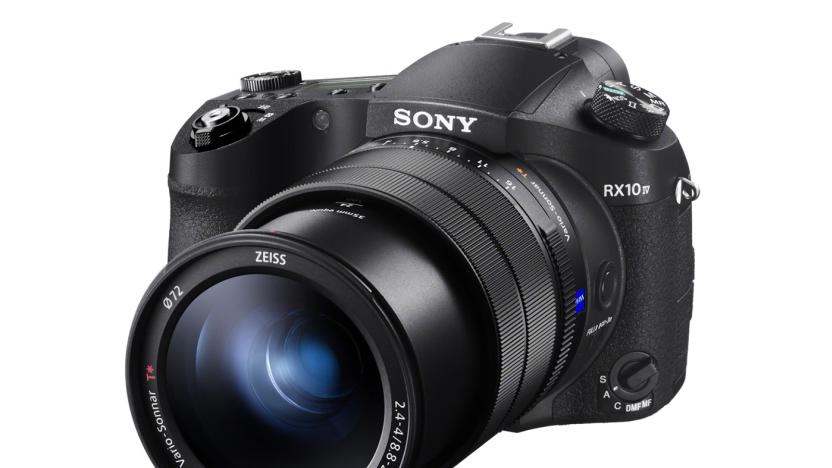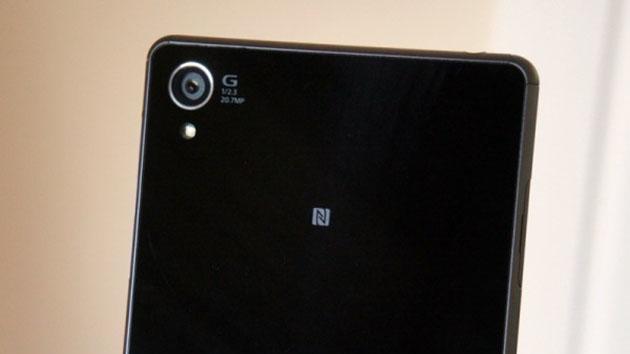StackedCMOS
Latest

Sony's crazy expensive RX10 IV superzoom gets a speed boost
Sony's camera theme over the last year has been "speed," especially with the arrival of its ultra-fast RX100 V compact. That notion continues today with the launch of the RX10 Mark IV, a 24-600mm f/2.4-f/4 superzoom, which gets a big shooting speed bump from 14 fps to a top-notch 24 fps. All that extra speed is thanks to the BionZ X image procesor mated to the RX-100 V's 1-inch, 20.1-megapixel Exmor RS CMOS stacked image sensor, which has a built in DRAM chip to buffer all those frames.

Sony's new sensor could bring DSLR-like autofocus to phones
While there's speculation that multi-sensor phone cameras are the next big thing, Sony has just launched a sensor that will likely make its smartphone cameras better soon. The latest Exmor RS IMX230 is a so-called stacked CMOS sensor that squeezes an effective 21-megapixels into a 1/2.4-inch sized form factor. The killer feature, however, is built-in 192-point phase-detection autofocus, which will keep fast-moving subjects sharp. The new chip also has integrated HDR for high-res stills and 4K video to save shots that are overly backlit or in shadow (see the image below).

Sony's stacked Exmor RS phone camera sensors detuned over quality worries
Sony would still like you to get excited about its upcoming Exmor RS stacked CMOS image sensors -- just not too excited. Both the 8-megapixel IMX134 and 13-megapixel IMX135 are scaling back from their original RGBW (red, green, blue, white) coding to an ordinary RGB over concerns that they aren't meeting Sony's "image quality standards" as originally designed. Consequently, either sensor will be less sensitive to light and diminish some of that high dynamic range magic. The company also doesn't want to get our hopes up for a quick arrival on shelves and clarifies that there's a phased launch starting in January. Mobile shutterbugs may be crestfallen knowing that Sony won't have the best possible camera sensor in future Xperia phones, but the honesty at least guarantees that the company gets a timely return on its $994 million investment.

Sony announces new Exmor RS cameraphone sensor: upgraded signal processing, HDR video recording
That camera sensor in your smartphone is very likely to be a Sony-made module which means it's worth keeping an eye on the company's latest sensor developments. Your next phone could be packing one of its latest Exmor RS camera modules, a stacked CMOS image sensor that's currently being readied for future smartphones and tablets. At the moment, three components fall under the new RS label, with two eight-megapixel sensors (one with new camera signal processing tech) and a top-drawer 13-megapixel module. Alongside the new sensors, Sony's crafted new f/2.2 lenses alongside a refreshed auto-focus module and all of them will be capable of HDR video recording. The company's now working on improving sensor behavior, image quality and keeping it all tiny enough for that next pricey phone contract. The first products are expected to arrive in October, so we may not see it in Sony's very next tablet, but development could be done in time for next year's effort -- and help validate the manufacturer's imaging investment.

Sony pumps $994 million into building stacked CMOS that lets smartphones record HDR Video
Sony is pumping 80 billion yen ($994 million) into its Nagasaki Technology Center, the home of its innovative stacked CMOS. Unlike traditional versions, the image sensor and circuit are mounted on top of one another, rather than side-by-side across a supporting substrate. The tweak means it shaves valuable millimeters from its body while producing far clearer images and, best of all, HDR Video. With the investment (and some Government subsidy) the company aims to pump out 60,000 wafers per month by the end of 2013. Given that both Samsung and Apple both use Sony's imaging equipment in their flagships, we can hope that the 13-megapixel units find their way into the next generation of handsets.



